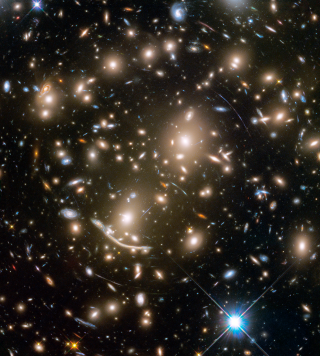Bibcode
Marino, R. A.; Rosales-Ortega, F. F.; Sánchez, S. F.; Gil de Paz, A.; Vílchez, J.; Miralles-Caballero, D.; Kehrig, C.; Pérez-Montero, E.; Stanishev, V.; Iglesias-Páramo, J.; Díaz, A. I.; Castillo-Morales, A.; Kennicutt, R.; López-Sánchez, A. R.; Galbany, L.; García-Benito, R.; Mast, D.; Mendez-Abreu, J.; Monreal-Ibero, A.; Husemann, B.; Walcher, C. J.; García-Lorenzo, B.; Masegosa, J.; Del Olmo Orozco, A.; Mourão, A. M.; Ziegler, B.; Mollá, M.; Papaderos, P.; Sánchez-Blázquez, P.; González Delgado, R. M.; Falcón-Barroso, J.; Roth, M. M.; van de Ven, G.; Califa Team
Bibliographical reference
Astronomy and Astrophysics, Volume 559, id.A114, 12 pp.
Advertised on:
11
2013
Journal
Citations
555
Refereed citations
510
Description
The use of integral field spectroscopy is since recently allowing to
measure the emission line fluxes of an increasingly large number of
star-forming galaxies, both locally and at high redshift. Many studies
have used these fluxes to derive the gas-phase metallicity of the
galaxies by applying the so-called strong-line methods. However, the
metallicity indicators that these datasets use were empirically
calibrated using few direct abundance data points (Te-based
measurements). Furthermore, a precise determination of the prediction
intervals of these indicators is commonly lacking in these calibrations.
Such limitations might lead to systematic errors in determining the
gas-phase metallicity, especially at high redshift, which might have a
strong impact on our understanding of the chemical evolution of the
Universe. The main goal of this study is to review the most widely used
empirical oxygen calibrations, O3N2 and N2, by using newdirect abundance
measurements. We pay special attention to (1) the expected uncertainty
of these calibrations as a function of the index value or abundance
derived and (2) the presence of possible systematic offsets. This is
possible thanks to the analysis of the most ambitious compilation of
Te-based H ii regions to date. This new dataset compiles the
Te-based abundances of 603 H ii regions extracted from the
literature but also includes new measurements from the CALIFA survey.
Besides providing new and improved empirical calibrations for the gas
abundance, we also present a comparison between our revisited
calibrations with a total of 3423 additional CALIFA H ii complexes with
abundances derived using the ONS calibration from the literature. The
combined analysis of Te-based and ONS abundances allows us to
derive their most accurate calibration to date for both the O3N2 and N2
single-ratio indicators, in terms of all statistical significance,
quality, and coverage of the parameters space. In particular, we infer
that these indicators show shallower abundance dependencies and
statistically significant offsets compared to others'. The O3N2 and N2
indicators can be empirically applied to derive oxygen abundances
calibrations from either direct abundance determinations with random
errors of 0.18 and 0.16, respectively, or from indirect ones (but based
on a large amount of data), reaching an average precision of 0.08 and
0.09 dex (random) and 0.02 and 0.08 dex (systematic; compared to the
direct estimations), respectively.
The compiled catalog is only available at the CDS via anonymous ftp to
http://cdsarc.u-strasbg.fr
(ftp://130.79.128.5) or via http://cdsarc.u-strasbg.fr/viz-bin/qcat?J/A+A/559/A114Based
on observations collected at the German-Spanish Astronomical Center,
Calar Alto, jointly operated by the Max-Planck-Institut für
Astronomie Heidelberg and the Instituto de Astrofísica de
Andalucía (CSIC).
Related projects

Galaxy Evolution in Clusters of Galaxies
Galaxies in the universe can be located in different environments, some of them are isolated or in low density regions and they are usually called field galaxies. The others can be located in galaxy associations, going from loose groups to clusters or even superclusters of galaxies. One of the foremost challenges of the modern Astrophysics is to
Jairo
Méndez Abreu

Traces of Galaxy Formation: Stellar populations, Dynamics and Morphology
We are a large, diverse, and very active research group aiming to provide a comprehensive picture for the formation of galaxies in the Universe. Rooted in detailed stellar population analysis, we are constantly exploring and developing new tools and ideas to understand how galaxies came to be what we now observe.
Anna
Ferré Mateu